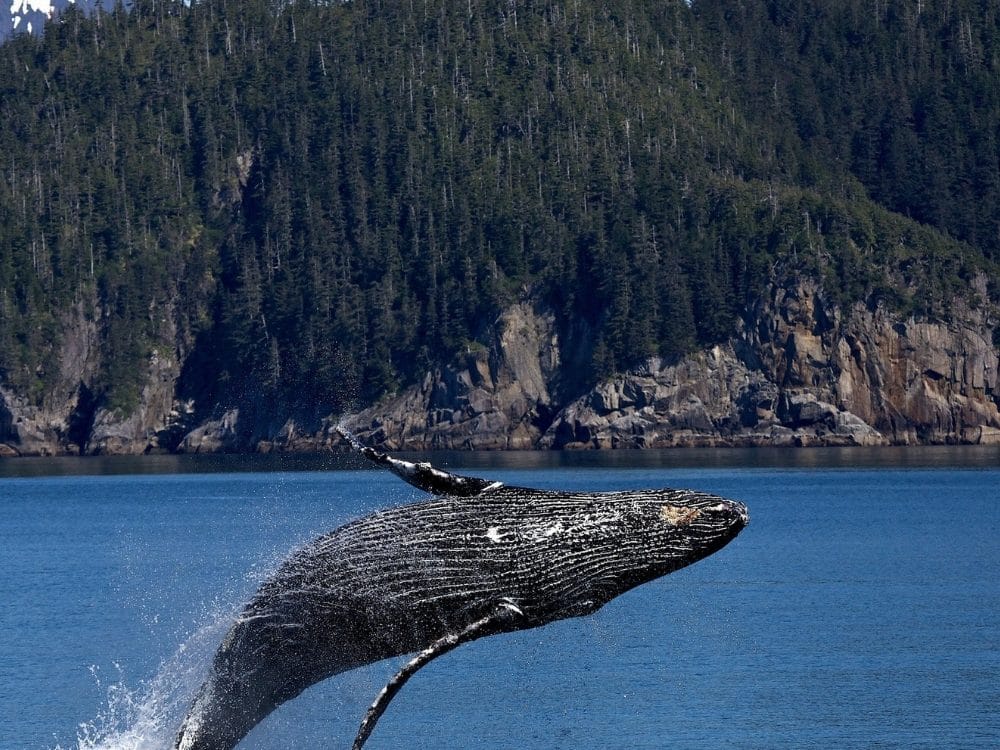We have the reflex to put on sunscreen when we go outside. But how do animals protect themselves? They do not really have the means to put on a ALGA MARIS ® sunscreen. Fact of the matter is, they have many different strategies to go about it. We will dive in here:
The «Homemade» Sunscreen Strategy
Dolphins, whales and other aquatic animals spend all of their time in the water and do not have protective fur. So how do they cope with some potentially dangerous effects of UV? Easy: by producing melanin and antioxidant enzymes. Sperm whales, certainly fans of great depths, spend up to 6 hours per day resting on the surface or just under it. Here, they are fully exposed to the sun. Accordingly, their skin cells activate the production of antioxidant enzymes to combat the effects of UV radiation.
Migrating species of baleen whales, like humpbacks and grey whales, tan just like us ?! At the end of summer the melanocytes of their skins have produced the most melanin, becoming darker. Unfortunately, they too are exposed to risks of skin cancer, especially with ozone layer thinning, and reports of skin cancer in whales are increasing.
The Animal that Sweats Blood
Not so long ago, tales were told of a terrible beast that lived on the hot African continent. It had teeth like knives, ran as fast as a horse and killed all that were so unlucky to be on its path. Its thick skin blocked blades and bullets alike. Under the torrid sun, it sweats blood… Sound scary?
Turns out it is actually a fairly accurate description of the hippopotamus. But wait, bleeding blood? It is true that one can see a red secretion on their skin when they are out of the water during the day. The precise nature of this substance long eluded scientific efforts to describe it, but it was presumed to be linked to UV protection.
Finally, after a long and complicated process, a Japanese research group succeeded in describing the exact nature of it, a polyphenolic compound that absorbs UV radiation, as well as inhibiting antimicrobial growth.
A Sea Urchin’s Seaweed Umbrella
We are not alone in using seaweed to protect ourselves from harsh sunlight. Even the prickly calcareous shells of sea urchins are not enough to protect their tube feet, especially in the tropics. Some species, when they are not hidden away in cracks, hold pieces of seaweed on themselves. In a recent article on PLOS One, Morgan Ziegenhorn, an undergraduate student from UC Berkely showed a close link with solar protection. She exposed sea urchins to strong light in the presence of two types of plastic : clear, offering no UV protection and colored, blocking UV. Unsurprisingly (to us!) the sea urchins chose those that offered better shelter.
How About a Mineral Bath?
What do rhinoceros, elephants and pigs have in common? Wallowing in the mud! This behavior has many practical functions: block and sooth insect bites, regulate temperature but also to protect against sunburn!
Moreover pigs are actually fairly close, genetically speaking, to hippopotamus and whales. Some researchers postulate that wallowing behavior, and that the desire to be in murky, muddy waters might have been a key step in the evolution of aquatic mammals from their terrestrial counterparts.
And Fido?
Some of our pets and notably cats and dogs can get sunburned! Most are well protected by their furry coats. However, those with white, short or not very dense coats are the most at risk. The areas that are affected the most are of course those that are the most exposed: the ears, nose, skin around the eyes…
All outdoor pets should have at the very least a shady area to take shelter in. Like people, sensitive animals can be dressed with protective clothing on long walks in high UV areas, like the mountaintops. You can even use a mineral sunscreen, like ALGA MARIS ®. No need to worry though, this is recommended by veterinarians only if you have already observed redness and irritation.
